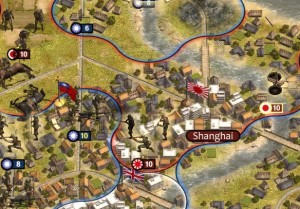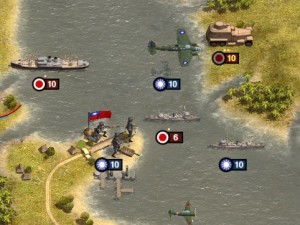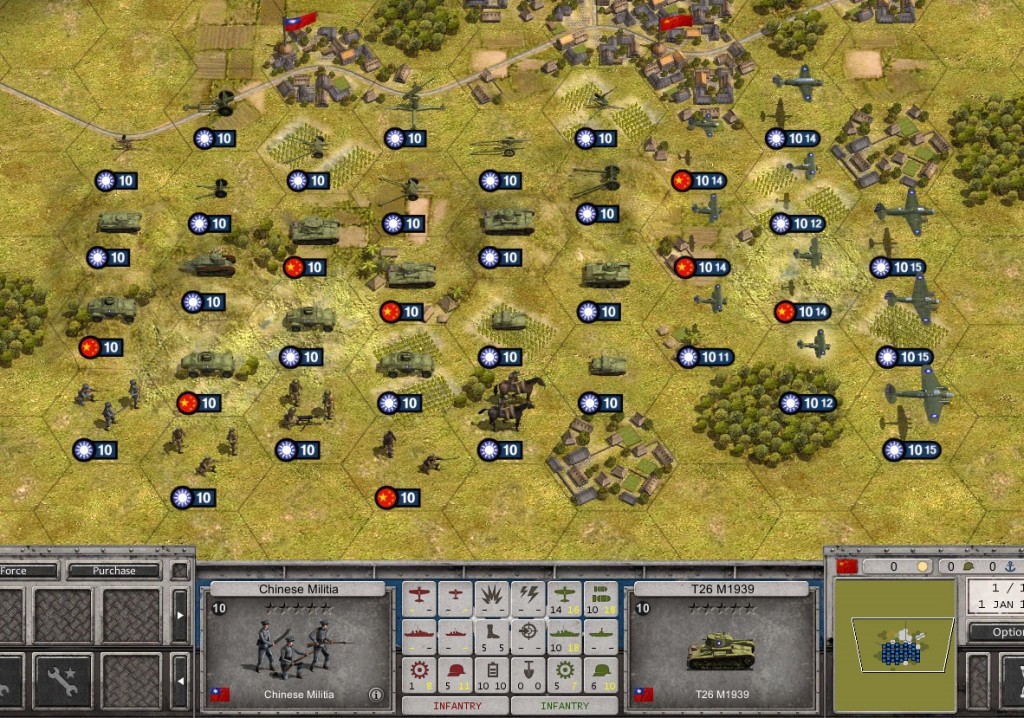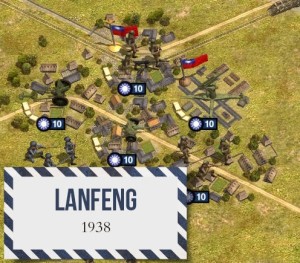Morning Sun!
- By Peter Harmsen
- 10 February, 2016
- No Comments
History buffs have been spending a large part of the time since 1945 gaming World War Two. It started out as board games, often made fiendishly complex in order to capture all the intricacies of modern war. Later the arrival of computerized games made the activity more accessible to a larger number of people, without sacrificing the attention to historical detail. One subject has been somewhat neglected all along, especially in the computer market: the war in China. One of the only exceptions is Order of Battle: Morning Sun, developed by The Artistocrats as an expansion of the best-selling Order of Battle: Pacific. We asked Lukas Nijsten, the company’s creative director, and Bernd Brosing, its scenario designer, about some of the thinking behind the game.
Why did you decide to do a game on the Second Sino-Japanese War? What was it about the war that convinced you it should be turned into a game?
Nijsten: Our plan for Order of Battle is to cover all of World War Two, as well as related conflicts taking place around the same time period. Since the initial game covered the Pacific War, we felt that exploring the conflict that set the latter in motion would make an interesting first expansion. Player feedback also encouraged us not to abandon the Pacific-Asia theatre just yet when we revealed our intention to include the European theatre in future updates.
The military aspect of the Second Sino-Japanese War is also well-suited for a strategy game: a large variation of major battles between the well-equipped Japanese forces on the one hand and numerically superior Chinese – always struggling to get better equipment in sufficient numbers – on the other.
What were the main adjustments you had to undertake in Order of Battle: The Pacific in order to make it a plausible simulation of the war in China?
Brosing: As long as a conflict features ground, air and naval units on a sufficient scale, the Order of Battle engine should be able to simulate it with an acceptable level of (abstracted) reality. The game features detailed combat mechanics to differentiate all the different weapons and has terrain and supply rules to represent logical advantages and disadvantages.
To demonstrate the complex internal relations in China we did have to add several new nations and unit types to the game, including many Soviet and German vehicles and aircraft for the Chinese forces, as well as several types of regular, militia and partisan infantry types. All these are spread among the nationalists, communists and various warlords, sometimes in conflict with each other, sometimes working together against the Japanese.
One of the challenges we did face when covering the conflict is the limited amount of information available on this war and its particular battles – at least when compared to the European theatre. This may be less of an issue for those who can read Chinese and/or Japanese, but we are largely limited to English sources.
 Are you planning additional scenarios from the war in China in future?
Are you planning additional scenarios from the war in China in future?
Nijsten: Over the course of next week we’re planning to release a number of new multiplayer maps, putting players in control of either Japanese or Chinese forces. For gameplay and balancing reasons these may not be strictly historical, but it does give players the opportunity to take control of the various Chinese units we added into the game.
You can only play the Japanese side. Why is this? Do you think it will be controversial with the Chinese fans? Is it possible you will make it possible to play the Chinese side in the future?
Can players learn something about history from Morning Sun, or is it mainly “just” a game?
A recent PC game, Decisive Campaigns: Barbarossa, incorporates war crimes as an element. Given the massive scale of atrocities in China, is it something you may consider in future updates?






 Copyright © 2025
Copyright © 2025
Leave a Reply